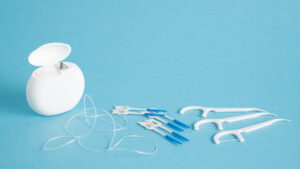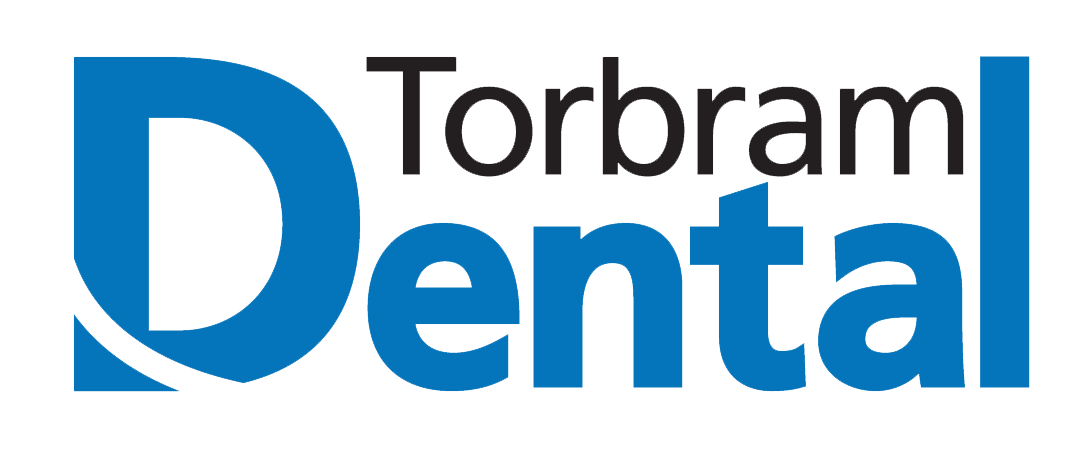
Torbram Dental weighs in on the most common myths regarding flossing. (Source: Todays Dental, Most Common Myths about Flossing, https://www.todaysdental.ab.ca/site/blog/2019/07/02/most-common-myths-about-flossing).
Having regular dental checkups isn’t the only part of good oral hygiene. Daily dental health care habits at home are also essential. Brushing and flossing your teeth regularly plays an important role. The best technique to clean around the teeth and below the gum line is to floss daily.
Flossing is one of the most essential steps in your oral hygiene routine. It helps remove bacteria and food particles that can cause tooth decay and gum disease. And it’s a great way to keep your smile shining.
Flossing has a lot of misconceptions, which can lead to people skipping this important dental hygiene routine. Let’s look at some of Todays Dental myths and what Torbram Dental has to say about them.
The first myth given by Todays Dental is that flossing is only necessary when food is lodged between your teeth.
Torbram Dental says, “Brushing will not eliminate bacteria between the teeth; only a piece of the tooth’s surface should be cleansed. Plaque is growing between your teeth even if you don’t see or feel anything trapped there. Flossing is the best practice to incorporate daily to avoid complications such as cavities, gum disease, and bad breath.”
The next myth that Todays Dental talks about is that you can’t floss because you wear braces.
Torbram Dental shares their view, “Although flossing is more difficult with braces, it is still an important activity. Gum inflammation is more common with braces. As a result, flossing will aid in keeping your gum line hygienic and plaque-free during your dental treatment. There are also varieties of dental floss that can get between the brackets. Most dentists will either recommend or provide their patient with a few packs.”
Torbram Dental then adds, “Many alternative orthodontic treatment methods are available nowadays. Clear aligners, such as Invisalign, may be removed for eating, brushing, and flossing, making the task simpler.”
Todays Dental then discusses the notion that you can floss with mouthwash instead of floss.
“Mouthwash, like brushing, is ineffective at removing plaque around teeth. Mouthwash can be a useful supplement to your dental health practice. Still, it should never be used in place of flossing,” advises Torbram Dental.
Todays Dental then shares the idea that youngsters are too young to floss, which many parents believe.
“The sooner the children are taught, the more likely they will adopt and sustain healthy oral health care practices throughout their lives. It’s not too soon for children to begin flossing. Motivate them and assist them if they are having difficulty flossing on their own. You can do it for your child if they are under ten years old. There are also child-friendly soft flosses and dental floss holders. Ask your pediatric dentist for other ideas.,” suggests Torbram Dental.
The final myth given by Todays Dental is that flossing causes your gums to bleed; thus, you should quit.
“When your gums bleed, it’s a warning that you should floss more frequently. Your gums may be bleeding merely since you haven’t flossed them in a long time. Your gums will bleed less if you floss frequently. It could indicate gingivitis or gum disease if your gums are often bleeding. So be sure to let your dentist know if you have any problems,” Torbram Dental concludes.
Recent Comments
Simrit has been working at Torbram Dental since 2001. She started her career with Assisting/Treatment co-ordinating and then moved on to becoming the Hygiene Co Ordinator in 2005. In 2012 she took on a new role as the Marketing Director. Though she loved being the Marketing Director, in 2015 she became the Office Manager of Torbram Dental. She completed her Level 1 Dental Assisting program with Career Canada in 1996 and then went on to complete her Level II Dental Assisting Diploma with Southwestern Medix in 1999. That is when she received NDAEB Certification. Simrit has been and still is an active member of the Ontario Dental Assistants Association since 2000. She enjoys hiking and traveling with her husband and two kids and loves to explore new restaurants, especially high-tea venues.
This will close in 0 seconds
Jessica, one of our receptionists, is one of the smiling faces you see when you arrive at the office. She graduated with honours from Medix College with a diploma as a Level 2 Dental Assistant. When she is not happily helping our patients, Jessica enjoys spending quality time with her friends and family, going to church on Sunday mornings, gardening and going on hikes.
This will close in 0 seconds
Naudia has been working at Torbram Dental for many years and is a valued member of our administrative team: as a dental receptionist and in our marketing team . She graduated from Everest College with honours level 1 and 2, with a diploma in Dental Assisting. Naudia is always there for our patients, making sure that they receive the care and attention they deserve. When not at the office, she enjoys spending time with family and friends, cooking and indulging in civil court TV shows.
This will close in 0 seconds
Ramandeep has been a part of Torbram Dental for the past 10 years as certified dental assistant. She obtained her level 1 certification from Everest college in Brampton in 2013, and then her level 2 certification in 2014 from Medix college. Her career path through the clinic has been recognized by staff at all levels who admire her work ethic and dedication to million dollar smiles. In her spare time, Ramandeep enjoys cooking and gardening, and spending time with her husband and 2 kids.
This will close in 0 seconds
Sana is a valued member of our dental hygiene team. In 2008 she completed her education at George Brown in Dental Assisting and in 2016 she earned her diploma in Dental Hygiene from the Canadian Academy of Dental Health and Sciences. Sana has been working in dentistry since 2008 and enjoys taking care of our patients and helping them with their oral health. She is married and is busy with her 2 young children. In her spare time, Sana enjoys going out with the family, trying out new places to eat and is looking forward to travelling with them in the future.
This will close in 0 seconds
Sanaria has been working at Torbram Dental for many years as a valued member of our Dental Assisting Team. She completed her level 2 dental assisting certification and previously obtained a degree in Education and worked as a quality control officer in the pharmaceutical industry. When not at work Sanaria loves to bake and cook. She also loves story time and enjoying the outdoors with her children. She always sees the positive side of life, believes that nothing is impossible and that if you set a goal and work at it, that you will make your dreams come true.
This will close in 0 seconds
Carrie has been working at Torbram Dental since 2001. She graduated from George Brown College in 1998 with a Dental Assistant Diploma and continued to further her education by completing a Dental Hygiene Diploma in 2001 at Durham College. Carrie is a highly trained and experienced Registered Dental Hygienist who continues to learn and grow by updating her knowledge to provide her clients with the best Oral Health Care techniques and information. Carrie is passionate about Dentistry and is known for her gentle and compassionate manner. She feels strongly about building lasting relationships and trust with her clients to help them understand that good Oral Health leads to good Overall Health. Carrie enjoys travelling, dabbling in decorating and a good Netflix series in her time off. Carrie resides in Halton Hills with her husband and two children.
This will close in 0 seconds
Daniela's interest in Dentistry began in Gr.6 when she wrote a speech entitled "My Life as a Toothbrush".
A Registered Dental Hygienist with 22 years of clinical experience, Daniela still has a great passion for her career. The most rewarding aspect for her is building lasting relationships with her patients, and seeing them through to a healthier smile.
Her thorough yet gentle touch will ensure a comfortable visit every time.
Daniela is a total Foodie and loves to cook and enjoys all types of cuisines. She loves Florida, Cruises, organizing things, and most of all spending time with family and friends.
This will close in 0 seconds
Stephanie Enjoys getting to know all new patients at Torbram Dental and catching up with long standing Patients. Stephanie enjoys spending quality time with her family. One of her favorite things to do with her daughter is teach and play the piano. Stephanie likes going on walks with her husband and enjoys spending as much time with him as he is an Active Member of the Canadian Army. On Sundays, Stephanie enjoys going to Church and looks forward to Sunday Dinner with her entire family. Stephanie's Favorite thing to do to start her day right is head to her local Starbucks and Grab her favorite drink, an iced black tea with light lemonade on warm days and a blonde vanilla latte on those cold winter days.
This will close in 0 seconds
As a dedicated Dental Hygienist at Torbram Dental, Aalisha brings recent knowledge and experience to ensure the best oral health for our patients. She holds a Diploma in Dental Hygiene from the Toronto College of Dental Hygiene and Auxiliaries and has further enriched her education with a Bachelor of Science from the University of Waterloo. Beyond her professional qualifications, Aalisha has a zest for life that extends beyond the dental chair. She cherishes quality time with family and friends, thrives on outdoor adventures, and has a passion for hiking and water-based activities, especially during the sunny summer days. She is an avid traveler, exploring tropical paradises and historic destinations while immersing herself in diverse cultures and indulging in delicious culinary experiences."
This will close in 0 seconds
Supreet was born and raised in Punjab, India and came to Canada in 2016. She graduated from Sheridan College as an Environmental Lab Technician but later decided to change her career to dentistry. She completed her Level I and II Intra-Oral Dental Assisting course from George Brown College and graduated in 2023. In July 2023, Supreet joined the team at Torbram Dental where she enjoys working. In her free time, she loves to read books.
This will close in 0 seconds
